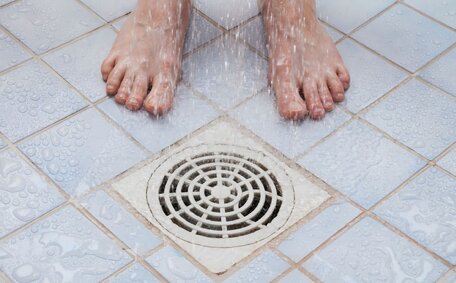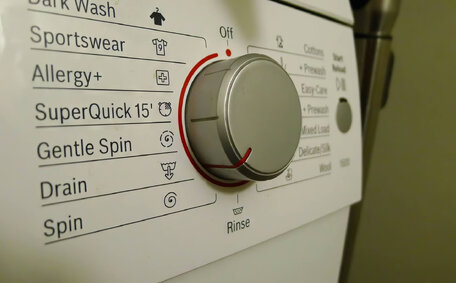
Baking Soda & Vinegar for Cleaning
Using baking soda & vinegar separately for cleaning is very effective; but mixing them dilutes their cleaning power. Learn how to use them properly.
Read MoreWhen renting a property, it’s important for tenants to understand their rights and responsibilities when it comes to plumbing system maintenance and repairs. This is especially true for the relining vs pipe replacement debate, where pipe relining offers an efficient solution, saving time, costs, and minimising disruption.
Pipe relining, inserting a new pipeline into the existing one and sealing it with epoxy resin, repairs damage and prevents leaks. For tenants, knowing how pipe relining costs are shared with their landlord is key to avoiding disputes and ensuring prompt repairs.
Rental regulations generally stipulate that landlords shoulder the responsibility for maintenance and repairs, encouraging tenants to learn more about pipe relining to understand the impacts of wear and tear on plumbing systems. However, tenants may be accountable for blocked drains repairs if they cause issues through accidental or intentional actions. When drain pipe relining is required, determining responsibility requires checking factors like the pipe’s age and location.
Tenants have the right to a property that is maintained in good working order. Being informed of their rights in the realm of Sydney plumbing helps both landlords tenants get the job done in determining whether the property meets plumbing standards.
In the context of pipe repairs and maintenance, distinguishing between normal wear and tear and tenant-caused damage is crucial.
Issues like leaking joints or flow constriction can occur as pipes age.
Tenants should be aware that over time, corrosion, mineral deposit buildup, or cracking can compromise the integrity of piping systems.
Tenant-caused damage refers to pipe problems directly attributable to misuse, abuse, or negligent behaviour by the renter.
For example, pouring grease down sinks or flushing foreign objects, leading to blockages, constitutes tenant-caused damage.
Specific factors help determine if pipe damage is considered normal wear and tear or if it’s an issue for which the landlord responsible:
A clear tenancy agreement that specifies roles and responsibilities can prevent misunderstandings. When repairs beckon, reaching out to your plumber, examining the fault collaboratively, and conferring over the agreement helps ascertain fiscal responsibilities a tenant can understand. Costs for pipe relining may be shared if ageing pipes and tenant mishandling contribute to the damage; this necessitates prompt landlord notification.
As property owners, the strategies we implement that keep you very happy with your habitable property are underpinned by numerous legal obligations. Managing repairs, adhering to maintenance obligations, and replacing essential infrastructure are key responsibilities for landlords.
Typically, the following fall into the landlord’s domain in a rental property:
In emergencies like a blocked drain, tenants should immediately inform the landlord, who generally bears the cost for urgent repairs and resulting damage. Tenants must notify their landlord soon to address leaks before extensive damage occurs; understanding local regulations can further clarify tenant responsibilities.
It’s crucial for landlords to adhere to these maintenance responsibilities to provide a safe, functioning living space, especially when tenant welfare is at stake. Ensuring a working smoke alarm and efficient pipe relining minimises property damage and health risks, reflecting conscientious property management.
In most cases, landlords can require pipe relining when there are issues due to normal wear and tear or damage not caused by the tenant. Some examples include:
Unless the tenant has clearly misused plumbing fixtures or intentionally damaged pipes, issues requiring pipe relining are the landlord’s responsibility. Tenants should promptly report leaks or plumbing issues to avoid worsening the problem and to learn about potential repair options, such as pipe relining.
There are also cases where the landlord and tenant may share pipe relining costs:
To prevent disagreements, clear communication, documenting the property’s condition before move-in, and joint damage assessments are essential to determine repair needs.
Tenants do have certain rights when it comes to refusing pipe relining proposed by their landlord. According to residential tenancy laws in most states, tenants can reject relining if:
However, under the residential tenancies act, tenants have options like requesting lower costs, negotiating a rent reduction during works, or seeking mediation if disputes arise over pipe relining.
The best approach is to thoroughly inspect properties at the start of your tenancy and note any prior damage. Reporting plumbing issues promptly during tenancy provides evidence of new problems, ensuring they are dealt with properly in future instances. If pipe relining is later recommended, comparing current damage with initial inspection findings helps determine the cause and appropriate liability.
Tenants do have certain rights when it comes to refusing pipe relining proposed by their landlord. According to residential tenancy laws in most states, tenantg to deterioration
Trenchless pipe relining is a convenient, non-invasive alternative to full pipe replacement. However, there is no doubt that any plumbing work requiring to dig up in a rental property can cause disruption for tenants. As conscientious landlords or property managers, minimising tenant disruption during pipe relining is a key consideration.
Effective communication with the landlord or managing agent is essential.
Give tenants sufficient advance notice of relining plans, specifying the exact dates and times, to prepare them for the installation of a new pipe inside the existing infrastructure. Explain what the process involves and how long it will take. Be upfront about any water shut offs or loss of use of amenities like toilets or laundry during the work.
Plan relining for when tenants are likely at work or school, aiming for water service restoration by the weekend through a new pipe insertion. Offer temporary accommodation if relining will make the property uninhabitable for a period.
Ensure appropriate safeguards like dust sheets and floor coverings are in place to keep the surroundings cleaned up and damage to a minimum. Ask the plumbing company about access requirements so doorways or private outdoor areas aren’t unnecessarily impacted.
Check if individual hot water or internal water pipes servicing each unit need to be relined. If so, schedule sequentially rather than concurrently to maintain services. Keep tenants informed about the progress and timeframes, especially if it concerns work on drain relining, throughout the process.
With thorough planning and skill, our team conducts pipe relining efficiently, allowing tenants peace of mind in their homes. A well-executed relining solution causes minimal fuss and avoids disputes, ensuring the serenity of your home.
Tenants have recourse options if pipe relining by their landlord or property manager is deemed improperly executed. According to residential tenancy laws, tenants can take the following steps:
Tenants ought to gather evidence, including photos of the damage, repair quotes, and communication with the landlord and their team. They can also seek guidance on pipe repair rights from organisations such as the Tenants’ Union.
The best approach is for tenants to only allow qualified, fully licenced plumbers like Lilyfield Plumbing to conduct your pipe relining. Reviewing credentials, feedback, and references can mitigate the risk of poor workmanship. If issues do arise, Very professional plumbers will promptly address any damage, rectifying problems to the tenant’s satisfaction.
Choosing qualified plumbers helps tenants avoid disputes and ensures pipe relining is performed to a high standard.
Tenants have recourse options if pipe relining by their landlord or property manager is deemed improperly executed.
The key takeaways for tenants are:
By following residential tenancy laws and advocating for their rights, tenants can ensure pipe relining meets requirements without undue burden. For professional pipe relining in Sydney, email or call the experts at Lilyfield Plumbing today.
In summary, as a tenant it’s crucial to understand your rights and responsibilities when it comes to pipe relining in rental properties. While wear and tear are generally the landlord’s concern, tenants may share costs if their actions contributed to damage to the pipes at your home. Open communication, inspection reports and understanding regulations helps determine liability fairly.
Using baking soda & vinegar separately for cleaning is very effective; but mixing them dilutes their cleaning power. Learn how to use them properly.
Read MoreBlocked drains are usually caused by buildup of hair, grease, debris and more in your pipes. Fix the problem with professional drain unblocking services to get your drains flowing freely again. Contact us for affordable drain unblocking.
Read MoreWhen you suspect a gas leak or damaged gas line, contact a licensed gas fitter immediately to locate and repair it. A gas line repair involves sealing leaks, replacing corroded or damaged pipes and testing all connections for safety before restoring gas supply.
Read MoreLilyfield, 2040 NSW
We will call back as soon as possible.




